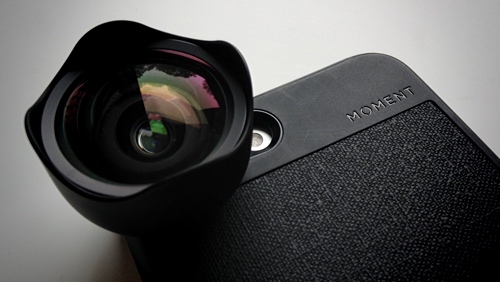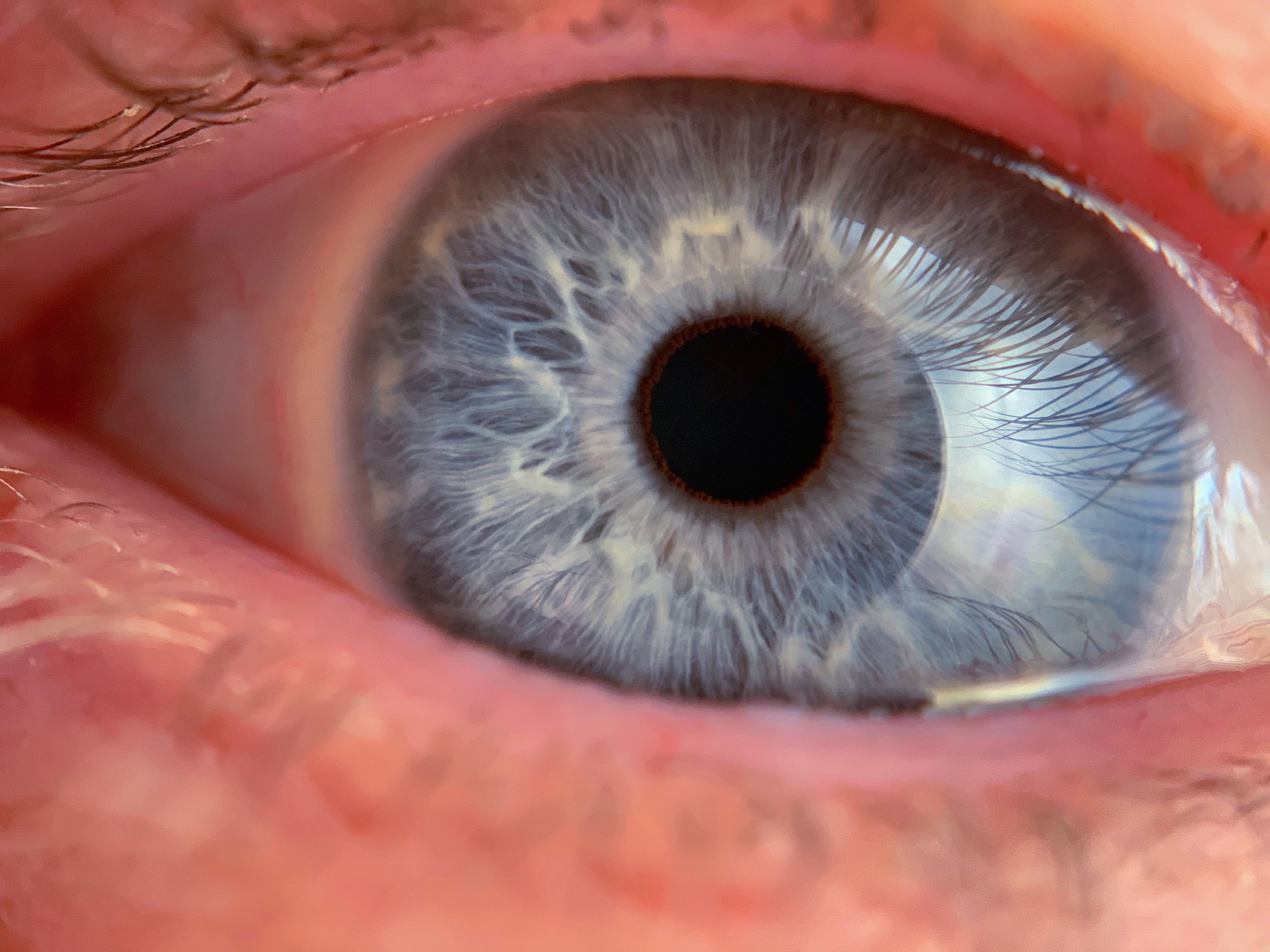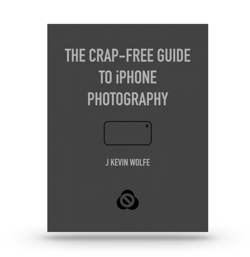Mobile lenses 101.
A concise guide to Moment add-on lenses for the camera on your phone.

Why use an add-on lens for your phone?
Every day, more of us are migrating away from DSLR, mirrorless and point-and-shoot cameras and depending on the ever-better cameras on the phone in our pocket. That’s because today, there’s not much difference in the two: The big camera manufacturers have shrunk sensors and put controls on the screen, essentially making their mirrorless offerings more like phone cams. Meanwhile, the phone manufacturers like Apple, Google and Samsung have enlarged their sensors, improved image processing and opened up their systems to photography apps that do things big-camera hardware never will.
Why two built-in lenses aren’t enough.
Phone cams have their limitations. Most camera restriction come down to device thickness. The lens bump you see on many phones is a sign that the sensors can’t get any bigger and the lenses can’t get any longer. And even with a two-lens phone with ever-improving digital zoom, those of us who’ve migrated from bigger sensors know there are a lot more amazing photos that could be had if our lenses let us get a little closer, a little farther away or a different perspective on our world. Add-on lenses let our phone behave much more like a big camera.
Why invest in good add-on lenses for your phone?
You’ve likely paid $1,000 of more for your high-end phone and may well have bought it just for the amazing camera. If you’re adding a lens attachment to push your phone cam beyond its limits, it makes sense that you’d pay a few bucks more for the best possible results, especially if those lenses can be used on your next phone and beyond.
This article covers Moment M-Series lenses. After buying a dozen brands of phone lenses, I gave up on Olloclip and others since they were just not as sharp. However, the competition is catching up, with new “pro” lenses by Shiftcam and Sandmarc scoring as high as moment in tests. But with well over $500 invested in Moment Lenses, I don’t know that I want to invest in a new line of lenses, unless I start seeing a marked level of difference.
Mounting your lens.
All mobile lense attachments require some kind of mount to hold them in front of your phone. Mounting brackets and magnetic rings typically don’t work with phones in cases, which is a deal-breaker for those those who want to protect their expensive phone. Moment lenses can be mounted with their cases (available for iPhone, Pixel, Galaxy and One Plus) or the new mount, which works with most mobile phones without cases. The good case selection and new mount somewhat futureproof your investment: If you switch brands of phone (or your significant other does) the whole lens collection still works, now and in the future.
What the different lengths of lenses do.
All the lens types used in professional photography are available for your phone. I’ll cover four of Moment’s M-Series prime lenses that work best for still photography, but these also work for video. (There’s also a Moment M-Series video anamorphic lens not covered here.) These all are for the back camera or cameras on your phone.
Moment 58mm Telephoto: Portrait lens that gets you twice as close. $100

When shooting with the wide lens (or the only lens) on your phone, you may have noticed that a face, and especially the nose, in your portraits looks exaggerated. If you slap the 58mm Moment Tele in front of the wide lens, that face become more attractive with more of a normal perspective. It’s the same view you get with built-in tele lenses on dual-lens phones.
When you place an add-on tele lens over the built-in tele lens of a dual-lens phone, you get the equivalent of about a 116mm lens, which is more like the length of lens portrait photographers use. It has a narrow focus area, so backgrounds get nicely blurred with a circular bokeh, while the subject is crisp. If you shoot a lot of people shots and want more flattering photos, this is a good lens to start with.
A big criticism in photograhy is “you’re not close enough”. But in people shots, we tend to stand a little further away so we don’t intrude into the scene or invade personal space. Whether in front of your phone’s wide or tele lens, the 58mm gets you twice as close, while standing in the same spot. A tele lens compresses a scene. Shoot a skyline and the buildings will look closer together.
A few cautions:
- With the 58mm in front of a built-in, dual-lens tele, you can start seeing camera shake in video and blur on stills in low light. A good monopod will help stabilize.
- Both the iPhone and Galaxy lenses do some trickery in the camera app that can default to the wide lens at 2X digital zoom when you think it’s using tele. You’ll instantly see since there’s just a gray blob showing on your screen. The easiest way make sure you’re actually using the camera’s built-in tele is with Moment’s free camera app, which uses the tele when you tell it to.
- Portrait mode on high end cameras (including the iPhone and Galaxy) use the tele and wide together to. Since the Moment tele covers the wide lens, this mode doesn’t work.
- The closest focusing distance of the Moment 58mm is about a foot with the built-in wide and four feet with the built-in tele.
Moment 18mm Wide: The landscape and architecture lens. $100

As pointed out in The Crap-Free Guide to iPhone Photography, architecture is the urban and indoor landscape. The Moment 18mm Wide lens gives you the perspective of being twice as far away, while standing in the same place. It makes buildings look taller, rooms look bigger and lets you to shoot a wider view in confined spaces. It’s the lens that real estate photographers use to make houses and interiors look so impressive. When used for traditional landscape photography, the 18mm can capture the expanse of land or the massiveness of the sky. It can show the bigness of our world and the smallness of us humans in it.
The Moment 18mm is a rectilinear lens, so the lines in your photos remain straight, no curved, though the vertical lines will tilt in when your view is tilted up or down. If using a dual-lens phone, you’ll likely want to use the Moment 18mm over the wide lens for maximum effect. The closest focusing distance is about two inches.
Moment 10x Macro: Revealing a world of microscopic proportions. $90

Macro is a world in itself that’s too small to see with the naked eye. But with a macro lens, you can create an intimacy (just like the “enlarged to show texture” photos on the cereal box.) The Moment 10X Macro lens is useful for shooting bugs, flowers, stamps, anything you need to close for.
The Moment Macro comes with a diffuser hood that will put you at optimal focusing distance of about an one inch. As with all macro lenses, the focus area is very narrow, so if you want more of the subject in focus you’ll need to shoot it flat, not at an angle. If on a multiple-lens camera, the Moment Macro is best used over the tele lens. There can be some vignetting on the phone’s built-in wide, depending on model and manufacturer. As noted above, you’re best off using the Moment app to access the built-in tele lens.
A caution: Macro photography puts your lens so close that your head and your phone can block out light. Shoot near an open window where the light is coming in in front of you, or get a selfie ring light. These sell for about $15 and fit over the macro lens to create a shadowless light. You’ll also find monopod helpful for holding the camera steady at a magnification level this high.
Moment Fisheye: Mind-bending reality. $90

Fisheye lenses warp reality, putting what’s in the center of the lens closer and what’s at the edges of the lens further away. This exaggeration and bending of lines can seem unrealistic and comedic, but can be a powerful tool for storytelling in photography. The tradition fisheye lenses used in DSLRs give you a round image with black edges, much like when you look though your door viewer. On the Moment Superfish 14mm lens, Moment chose to keep the warp within a useful range with a 15mm-equivalent, 170º-view that shows the image full frame, without the cliché and off-putting circular vignetting. Another nice features that makes the Superfish more useful is (differing from wider fisheyes) the center of the image looks much more normal, without excessive bulging.
The Moment Superfish can capture the maximum expanse. It bends buildings in, makes reality loom. If shooting a group portrait, slap the Superfish on at the end to take the goofy fun shot. The view of this lens is so wide that it’s easy to get your feet in the image. The Superfish is best used on the wide lens.
Where to begin your add-on, mobile lens collection.

If you look at starting a quality lens collection as an investment, you’ll not only get more use out of it and get better photos: you’ll ultimately spend less. I’ve bought many other brands of lenses over the years that are now useless because they were only designed for one camera model or can’t be used on the new bigger mobile lenses. Moment lenses have been the sharpest, but now Sandmarc and Shiftcam’s pro lines are catching up.
To begin a lens collection, I’d recommnend you start with one lens that suits your style of shooting. If you shoot a lot of people shots, the 58mm tele will get you compliments on your portraits. If you hike and want to share the vistas you witness, the 18mm wide is a good bet. If the macro world fascinates you, start there. You may find that one lens fills your needs. Or if you’re used to a DSLR, you may find the flexibility a whole set really frees your creativity with your whole lens kit weighing half a pound and costing less than one DSLR lens.
A note about Moment Series M and Series O lenses. It’s best to buy Moment lenses new to make sure you’re getting the current Series M mount. When Moment lenses were first created in 2014, the iPhone 5S was the current model with one, 8mp, rear camera (and not a camera bump in sight.) But phones changed: Within a few years the sensor was increased to 12mp, the wide lens got bigger to let in more light and more lenses were added. With this evolution, the original Moment Series O add-on lenses started vignetting and the optics were no longer optimal for new, bigger, built-in lenses. In 2017, Moment introduced the Series M mount with new lenses designed to give exceptional results with most high-end phone cams. Will there be a need for v3? We’ve likely reached a stabilization point dictated by physics: we can’t fit a bigger, better camera with traditional glass optics into a phone this thin. Moment’s V2 mount and lenses could be around for quite a while.

Get the definitive book for mastering your iPhone camera: The Crap-Free Guide to iPhone Photography
